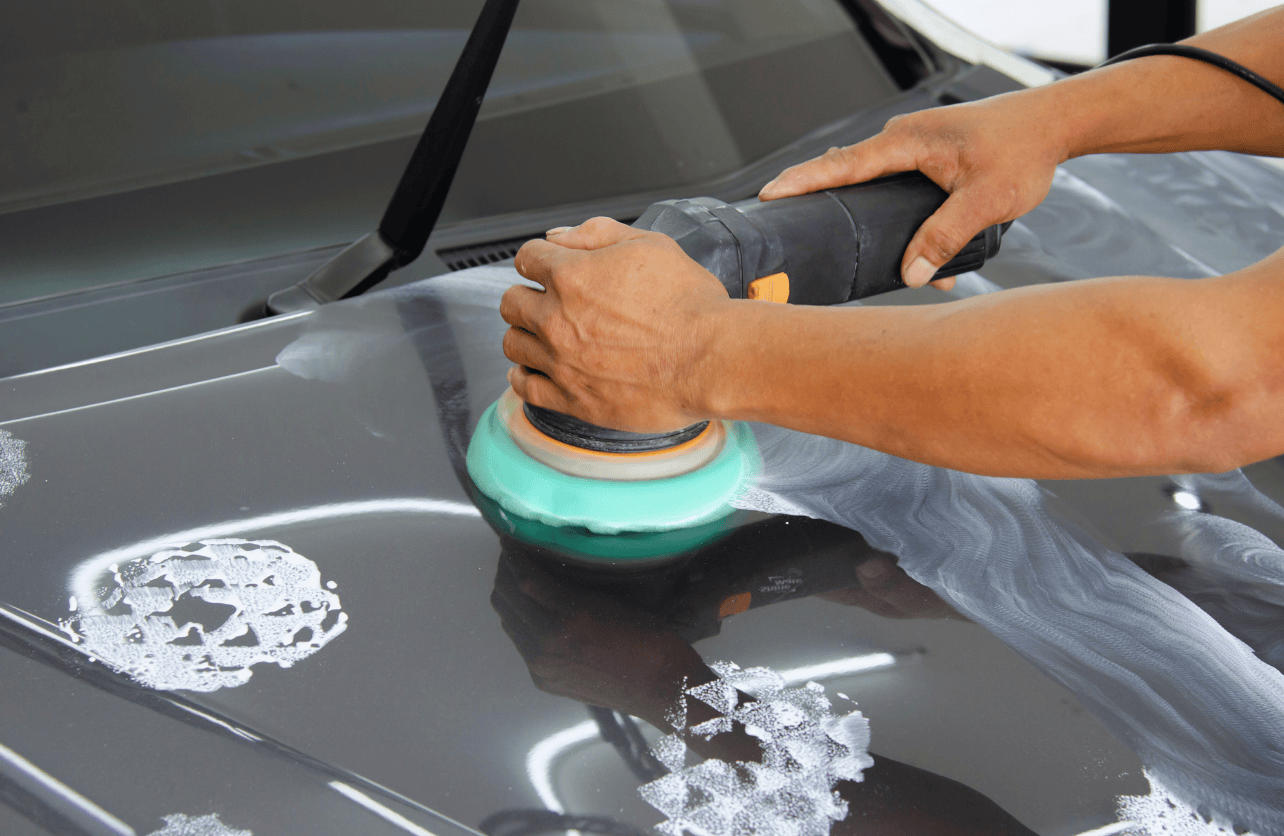Should You Wax a Car After Polishing?

Polishing a car can do wonders for its appearance, removing imperfections, scratches, and oxidation while restoring its natural shine. However, many people wonder what comes next: should you wax your car after polishing? The short answer is yes, and doing so is crucial to maintaining your car’s finish and protecting its paintwork. This guide will explain why waxing after polishing is essential, how to do it properly, and how it benefits your vehicle in the long run.
Why Waxing After Polishing is Important
When you polish your car, the process removes a very thin layer of the clear coat that protects the paint. While this helps to eliminate surface imperfections like swirl marks, scratches, and oxidation, it also strips away any existing wax or sealants. This leaves the paint vulnerable to environmental damage from UV rays, dirt, road salt, and moisture.
Waxing your car after polishing creates a new protective barrier. This not only safeguards the paint but also enhances the shine achieved during polishing, making your car look freshly detailed. Wax acts as a shield, keeping contaminants from settling into the paint and preventing long-term damage.
The Ideal Timing for Waxing
For best results, you should wax your car within 24 hours of polishing. This ensures the wax bonds effectively with the freshly polished surface. Waiting too long can expose the unprotected paint to contaminants, reducing the effectiveness of the wax and potentially diminishing the results of your polishing efforts.
How to Wax Your Car After Polishing
Follow these steps for a flawless finish and lasting protection:
- Prepare the Surface
After polishing, ensure the surface is clean and free of any leftover polishing residue. Wipe down the car with a microfiber towel or lightly wash it with a pH-balanced car shampoo. Let it dry completely before applying wax. - Choose the Right Wax
Select a high-quality car wax that suits your needs. Paste waxes provide a long-lasting protective layer, while liquid waxes are easier to apply. For a quicker option, spray waxes work well but may not last as long. - Apply the Wax
Using a foam or microfiber applicator pad, apply a thin, even layer of wax to one section of the car at a time. Follow the manufacturer’s instructions for application, as some waxes require circular motions while others need straight-line application. - Let it Cure
Allow the wax to cure for the recommended time, typically a few minutes. Once the wax has dried, the surface should appear hazy. - Buff to a Shine
Use a clean microfiber towel to buff the waxed surface in circular motions until the haze disappears, leaving behind a glossy, smooth finish. Repeat this process for each section of the car.
Benefits of Waxing After Polishing
Waxing after polishing offers several key benefits that go beyond aesthetics:
- Protection from UV Rays:
The wax acts as a barrier against harmful UV rays, which can fade and dull your car’s paint over time. - Water and Dirt Repellence:
A waxed surface makes it easier for water, dirt, and other contaminants to slide off, reducing the risk of staining and buildup. - Enhanced Shine:
Wax amplifies the shine achieved during polishing, giving your car a mirror-like finish that turns heads. - Longevity of Polishing Results:
Wax seals in the polished surface, helping the effects of your hard work last longer by preventing oxidation and surface damage. - Ease of Maintenance:
Regular waxing makes future cleaning easier. Dirt and grime are less likely to stick to a waxed surface, reducing the need for aggressive scrubbing.
Common Mistakes to Avoid
While waxing after polishing is straightforward, there are a few pitfalls to avoid:
- Skipping the Wax:
Polishing without waxing leaves your car’s paint exposed to damage. Even if the surface looks great, it’s unprotected and vulnerable. - Overapplying Wax:
More wax doesn’t mean better results. Applying too much can lead to streaking and make buffing unnecessarily difficult. - Using the Wrong Wax:
Low-quality or inappropriate waxes can fail to provide adequate protection or may not bond well with the polished surface. - Applying Wax on a Dirty Surface:
Always ensure the car is clean and dry before waxing. Any dirt or residue left on the surface can scratch the paint during application.
How Often Should You Wax Your Car?
To maintain a protective layer, wax your car every 2-3 months, depending on driving conditions and exposure to environmental factors. If you live in an area with harsh weather or frequent road salt, waxing more frequently can help keep your car’s paint in excellent condition.
Wrapping Up
Polishing and waxing go hand in hand when it comes to maintaining your car’s appearance and protecting its paintwork. While polishing enhances the shine and removes imperfections, waxing seals the surface and provides the protection your car needs. By taking the time to wax your car after polishing, you’ll not only preserve its showroom shine but also ensure long-lasting protection against the elements.
Invest in quality products and follow the proper steps to make the most of your efforts. Whether you’re a car enthusiast or simply want to keep your vehicle looking its best, waxing after polishing is a step you should never skip.